Best Of
The dark truth behind Sally Field’s Oscar Win in Norma Rae
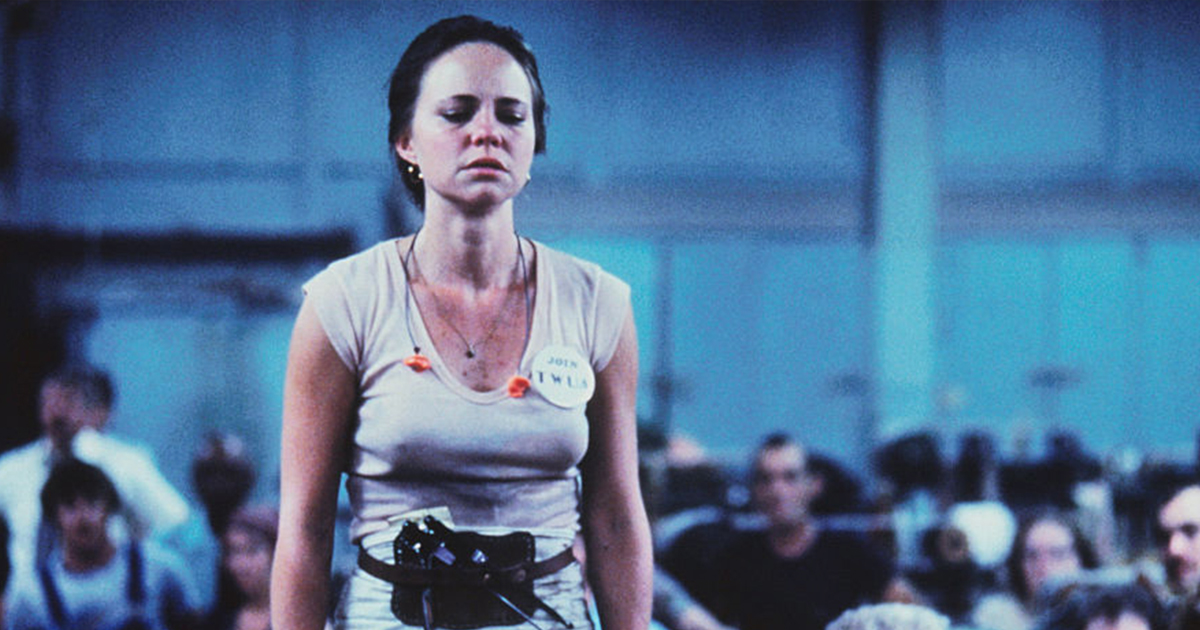
Her portrayal of a determined textile worker fighting for labor rights earned her an Academy Award and left audiences in awe.
But behind the scenes, the path to that unforgettable performance was marked by emotional struggles, self-doubt, and even a few broken ribs.
Holidays, the 40-hour work week, healthcare, worker safety laws, child labor protections, minimum wage — the list goes on. None of these crucial worker rights would exist without unions, even for those not in them.
In Norma Rae, Sally Field’s iconic portrayal of a woman standing up for her rights and the rights of her fellow workers is still a reminder of how far we’ve come.

Sally’s performance not only earned her the recognition she deserved, but also likely inspired future powerhouse performances from actresses like Julia Roberts in Erin Brockovich and Meryl Streep in Silkwood.
But as mentioned, she had to pay a high price for her iconic role.
Did the film against Burt Reynolds’ advice
Before Norma Rae, Sally Field was still trying to break free from her early TV image as The Flying Nun and Gidget. Hollywood didn’t take her seriously, and she knew she had to prove herself. When the opportunity to play Norma Rae Webster came along, she saw it as a chance to redefine her career — but it wouldn’t be easy.
A major problem was that Sally’s then-boyfriend, superstar Burt Reynolds, was being unsupportive and jealous.
Reynolds didn’t approve of Field taking on the role of Norma Rae and famously told her, ”No lady of mine is gonna play a whore.” When Field tried to explain that it was just a part she was playing, Reynolds mocked her, saying, ”Oh, so now you’re an actor… you’re letting your ambition get the better of you.”
Sally recalled the moment she first watched the film, sitting in a small screening room at Fox Studios next to her mother, feeling an overwhelming fear.
”What flashed through my head was the fear that I wasn’t enough to hold an audience for two hours,” she reflected.
Proposed on the last day of filming
The high-profile relationship between Sally and Reynolds began after he asked her to star in Smokey and the Bandit. At first, their connection was instantaneous and intense, but it soon turned into a nightmare for Sally.
She describes how the movie star quickly began to ”housebreak” her, dictating ”what was allowed and what was not,” which led her to become a ”shadowy version of herself.” His negative attitude toward her role in Norma Rae was just the latest manifestation of all the criticism Burt had for Sally.
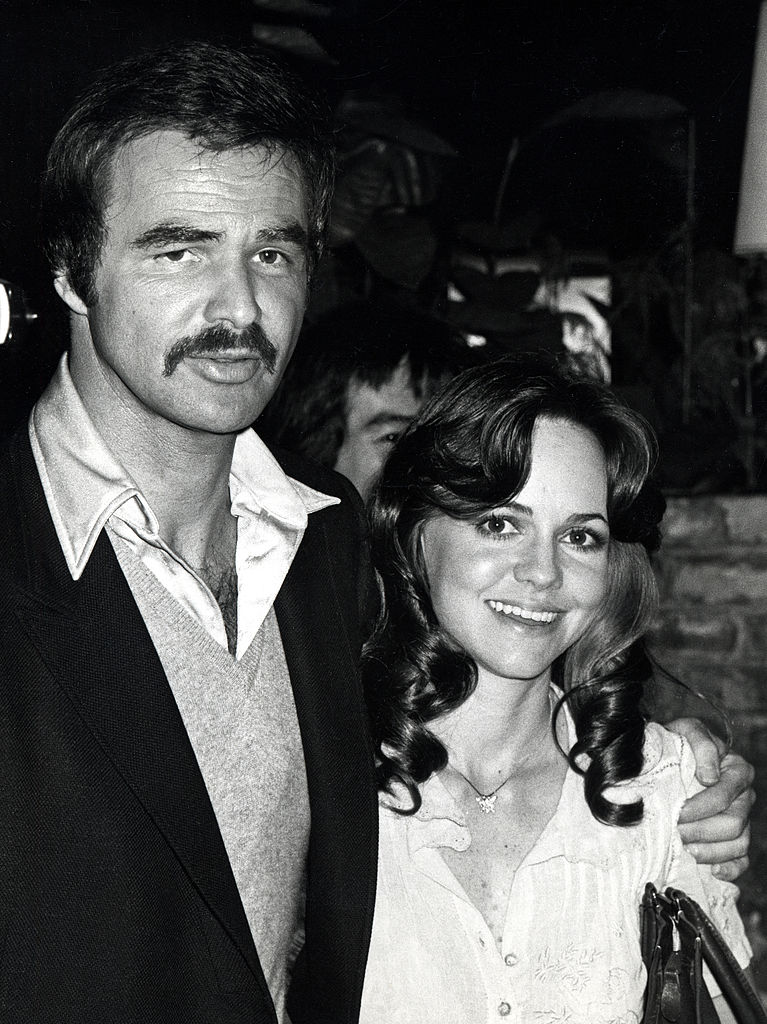
Despite his objections, Field went ahead with the role. On the final day of filming, Reynolds showed up on set and proposed with a diamond ring. Field recalls the moment, saying it felt ”not me,” and she didn’t accept his proposal. The awkward exchange left her with little to say other than a simple, ”thank you.”
After Norma Rae wrapped up, Field began to feel herself growing more confident and independent – it was almost as if the role and her personal life collided. Field noticed her personality starting to ”flare out,” which did not sit well with Reynolds.
He responded with ”shocked disapproval.”
Worked in the mill every day for two weeks
As many might recall, Norma Rae is inspired by the real-life story of Crystal Lee Sutton, a textile worker from Roanoke Rapids, North Carolina, where the fight for a workers’ union unfolded at a J.P. Stevens Textiles mill.
Field auditioned for the role while briefly visiting New York from the set of Hooper and was chosen for the part, which had already been passed over by several actresses. (According to her autobiography, Shirley MacLaine had initially expressed interest in the role.)
To fully prepare for her role, Sally Field dove deep into the lives of Southern mill workers. She and Beau Bridges conducted thorough research by spending time working in a factory, according to IMDb. Field immersed herself in the environment, adopting the workers’ mannerisms, understanding their struggles, and experiencing the physical and emotional exhaustion they faced.
”I worked in the mill every day for two weeks; not all day long, I didn’t have an 8-hour shift, but I felt like it. I guarantee, two hours in that weaving room felt like 8 hours anyplace else, because the vibration is like the motion on a ship, the whole room shakes and it makes you seasick. So you have to get used to it, get your sea legs. All the actors and the crew were saying, ‘I don’t know how they do it’,” Sally Field explained.
Where did they shoot Norma Rae?
While the real story of Crystal Lee Sutton unfolded in Roanoke Rapids, North Carolina – but Norma Rae was actually filmed in Opelika, Alabama.
Filming kicked off in May 1978, and the town’s locals stepped in as factory workers for the scenes. The Opelika Manufacturing Corp. was transformed into the textile mill for the movie, while The Golden Cherry Motel, which has been around since the 1940s, was used for the motel scenes.
Although the Opelika textile mill, which had been the first in town since 1900, closed down in 2004, it wasn’t demolished until 2016. During filming, one tricky detail was the constant hum of the machines at the mill, which made it hard to catch the actors’ lines on camera.
A huge event
When Hollywood came to the small town of Opelika, Alabama, it was a huge event. During the filming, Field had a meeting with then-Gov. George Wallace, while many locals eagerly awaited the possibility of megastar Burt Reynolds visiting his girlfriend on set. The excitement in the air was palpable.
Burt did make a few visits to the filming locations, but it was Sally Field, the film’s leading star, who truly left a lasting impression on the local community.
“She was a lovely lady,” says Warner Williams, who was active with the Opelika Chamber of Commerce during the filming of Norma Rae. “Days before filming, she wore old ragged clothes and hung around the mill, psyching up for her character.”
The real Norma Rae – Crystal Lee Sutton
Crystal Lee Sutton was born on December 31, 1940.
She grew up in Roanoke Rapids, a town that, as she remembers, was sharply divided between workers and managers.
”All my life, textile workers were looked down on. The doctors and lawyers and managers didn’t want their children to associate with us. They always had new clothes, they were the smartest. They were the cheerleaders, and the majorettes — anything outstanding, it came from your higher class of people,” Crystal told Washington Post in 1980.
Crystal Lee started working when she was just 16. By 17, she was already working the 4 p.m. to midnight shift at a textile plant, filling batteries. At 19, she became a mother for the first time, and by 20, she faced the heartache of losing her husband.
At 21, she had her second child, and in 1965, her third arrived.
Known for her courageous stand as a union organizer, Crystal Lee Sutton made headlines in 1973 when she was fired from her job at the J.P. Stevens plant in Roanoke Rapids, North Carolina, for her pro-union activism.
At that time, Sutton was a 33-year-old mother of three, working at a wage of $2.65 per hour, folding towels. Her battle for workers’ rights was immortalized in the 1979 film, which was inspired by the 1975 book Crystal Lee: A Woman of Inheritance by New York Times reporter Henry “Hank” Leifermann.
Director Martin Ritt once said of Crystal Lee Sutton, ”I’ve known a lot of women in my life, most of them much more educated and sophisticated, who would not have had the balls that she had.”
Crystal Lee Sutton’s honest take on the movie
Crystal Lee Sutton, the woman behind the story of Norma Rae, was not pleased with how the film turned out.
She believed it should have been a docu-drama. Sutton found the movie ”funny” and admitted, ”It made me cry in parts and it made me laugh… I just thought if they’re going to spend millions of dollars making a movie, I wanted it to be a good educational union movie, not a soap-opera love story like you can see every day on TV.”
Sally Field also cried after watching the movie. She admitted that the overwhelming reaction from the audience at the Norma Rae premiere at the Cannes Film Festival brought her to tears.
Sued the creators of the movie
Norma Rae grossed $12.5 million, yet Sutton received no profits from the movie.
The same was true for the book Crystal Lee — she received nothing from it either.
After the film’s success, Crystal Lee Sutton had to sue 20th Century-Fox to receive a small settlement, eventually getting $52,000 — half of which went to taxes. After paying off some of her loans, Crystal used the remaining money to buy her third husband a secondhand Pontiac Trans-Am. ”He helped me and supported me through all this, and he deserved something,” she told Washington Post.

Her husband, Preston Sutton, expressed his deep admiration for her courage:
”I told my wife I don’t give a damn if we have to live in a car, I’m proud of what she done and what she stood for,” Preston Sutton said. ”You better damn well believe there’s a lot of people that would like to have the guts to do what she did.”
Sally Field and Crystal Lee Sutton met once
One of the highlights of Crystal Lee Sutton’s life came in California in 1980 when she met Sally Field, who played her in Norma Rae. The meeting between the real-life inspiration and the actress, set up to promote the film, was a memorable moment.
Sutton recalled meeting Field at a reception, with cameras flashing as they posed together, their hands raised in a shared moment of triumph.
”We talked about children,” Sutton said. ”She told me if ever there was anything she could do for me let her know.”
Crystal Lee Sutton, the real-life woman behind the Oscar-winning film Norma Rae, passed away on September 11, 2009, at 68. She died of inoperable brain cancer at Hospice Home in Burlington, North Carolina.
Dolly Parton connection
In Norma Rae, Sally Field’s character sings along to Dolly Parton’s song ”It’s All Wrong, But It’s Alright” on the radio.
A decade later, Field and Parton would share the screen as co-stars in the beloved film Steel Magnolias, forming a memorable connection between the two icons.
The truth about the UNION sign scene
The iconic scene in Norma Rae, where she writes “UNION” on a piece of cardboard and stands on a table until her co-workers turn off their machines, is directly inspired by an event in Crystal Lee Sutton’s life.
This dramatic moment, which has become one of the most famous in U.S. film history, was a pivotal act of defiance by Sutton in 1978.
In the film, the character Norma Rae is called into the management office and fired after attempting to copy a racist letter.
Refusing to leave, she writes “UNION” on cardboard and stands on a table in the weaving room, holding it up for all to see. This act of bravery remains one of the most powerful and defining moments in cinematic history.
Crystal Lee Sutton herself recounted the real event: “I took a piece of cardboard and wrote the word UNION on it in big letters, got up on my work table, and slowly turned it around. The workers started cutting their machines off and giving me the victory sign. All of a sudden the plant was very quiet…”
The truth about the movie poster
One thing that has frustrated some people is one of the film’s movie poster.
Instead of featuring a determined Norma Rae in her work clothes holding the union sign, as you’d expect, the poster shows a smiling, more polished Sally Field simply raising her hands in the air. It seems odd, almost as if the union sign was intentionally removed.
There is an explanation for this shift in focus. Martin Ritt, the director, once stated that his main interest was in telling the personal story, admitting that he “couldn’t have cared less about labor unions.”

In a way, the movie Rocky also had an influence on how Norma Rae was marketed.
Tamara Asseyev and Alex Rose, the co-producers of Norma Rae, revealed in an interview that Rocky showed them the box office potential of a story about “a small person who succeeded.” This insight helped them sell the idea to 20th Century-Fox and Alan Ladd Jr., after it had been rejected by several other studios.
The escape from acute cuteness – broken ribs
Sally Field, long known for her sweet and light-hearted roles, had grown tired of being cast as the “cute” flying nun.
”I was so tired of being boring, but for a long time, I really didn’t have the guts to make any hard decisions,” she said.
So, Norma Rae was more than just a breakthrough — it was a turning point.
And Sally Field really threw herself into the role — so much so that during a scene where she’s struggling to avoid being shoved into a police car, she ended up breaking one of the actor’s ribs.
”You don’t expect to win anything, do you?”
But when Sally Field won the Academy Award for Best Actress, her emotions were a mix of disbelief and overwhelming joy. Hollywood had finally acknowledged her talent, but the road to this moment had been far from easy.
We now know that Field took on the film against Burt Reynolds’ advice, which ultimately led to the end of their relationship.
We also know that Reynolds refused to attend the ceremony with Field, despite her Best Actress nomination. And when Field told him she was attending the Cannes Film Festival, he was dismissive, asking in a frustrated tone, ”What the hell I intended to do there?” He dismissed it as a ”waste of time” and lashed out, questioning, ”You don’t expect to win anything, do you?” before hanging up the phone.
Thankfully, it was fellow actor David Steinberg and his wife, Judy, who came to her aid when Reynolds refused to be her date to the Academy Awards.
”David said, ‘Well, for God’s sakes, we’ll take you,’” Field recalled. ”He and Judy made it a big celebration. They picked me up in a limousine and had champagne in the car. They made it just wonderful fun.”
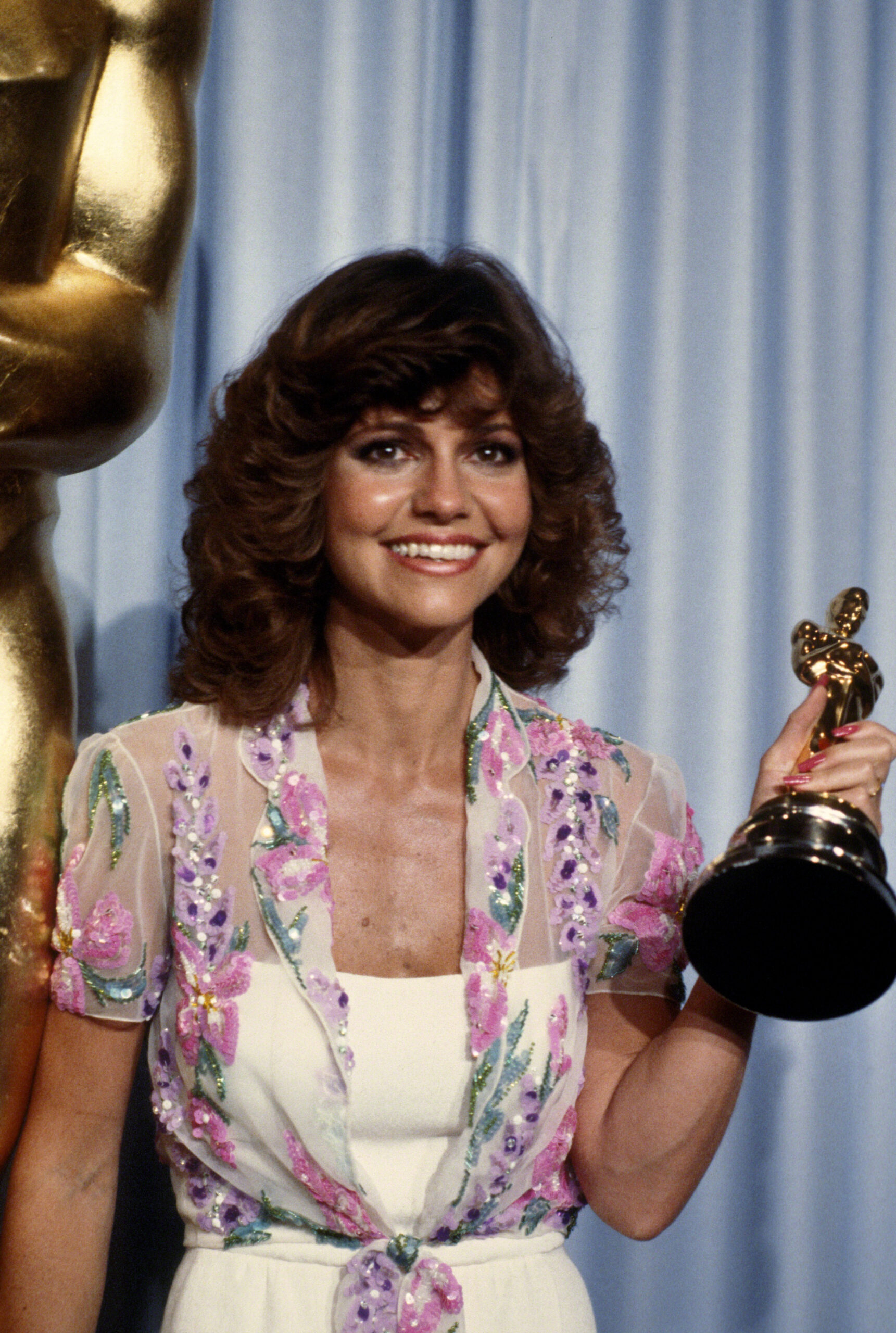
More than four decades later, Norma Rae remains one of the most powerful films about workers’ rights, and Sally Field’s performance continues to inspire.
But behind the triumph was a woman who gave everything she had to bring one of the most important characters in cinema to life. The truth? Success didn’t come easily — it was fought for, just like Norma Rae herself.
You may like
Best Of
Animal lover finds squirrel with giant tooth, brings him home and gives him a new opportunity – thank you
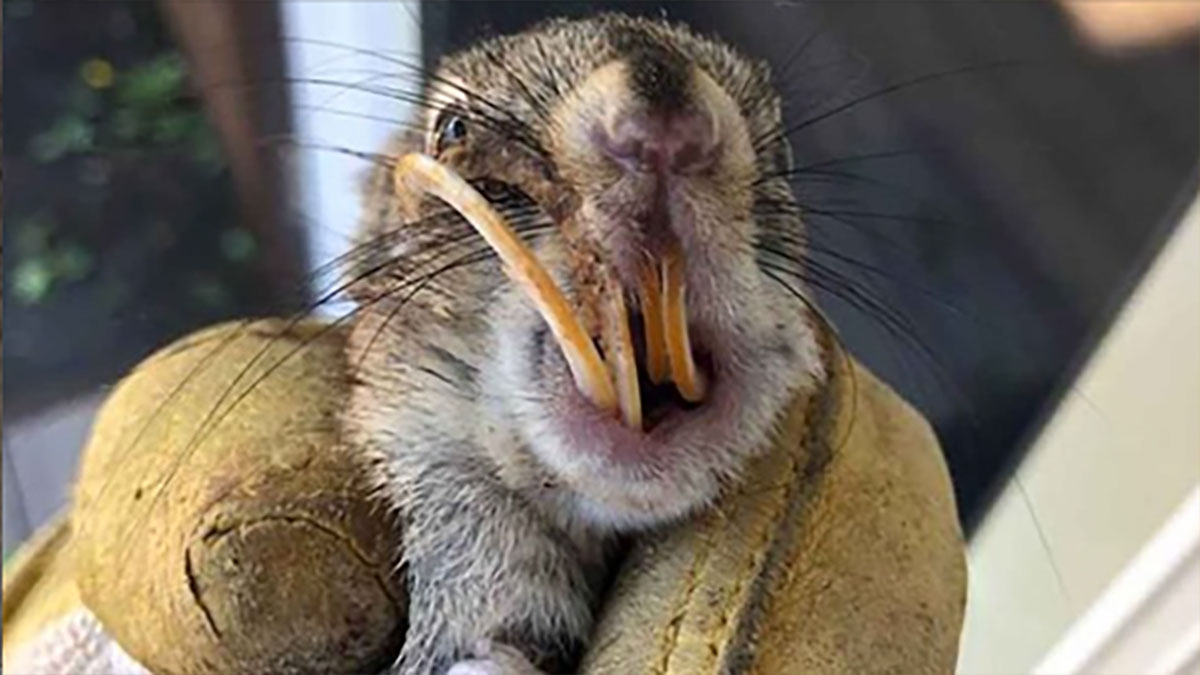

Living on a ranch in rural Alberta, Canada, Jannet Talbott may be far away from people but is never alone as she is always surrounded by animals.
The animal lover is used to the many animals, both domestic and wild, who live on her ranch and looks out for them all.
One day she was watching a squirrel enjoying a snack from her bird feeder when she noticed something unusual on his face.
“I could see there was something on the side of his face,” Talbott told The Dodo. “I got closer and thought, ‘Oh my gosh, that’s a massive tooth growing out of his mouth.’”
Squirrels have four front teeth that never stop growing but their constant gnawing on nuts and seeds ensure most squirrels’ teeth are kept short. Somehow this had not happened with this squirrel and Jannet knew he was in danger.
The tooth was growing toward the squirrel’s eye and Jannet suspected he was living on powdered bird food as he couldn’t chew on anything.
Here’s what Janett used to trim Bucky’s teeth – a cuticle trimmer. And yes, that is one of the squirrel’s teeth beside it. #sabretoothsquirrel pic.twitter.com/3Kn50AAtpn
— Sarah Ryan (@SarahRyanYEG) June 16, 2018
Now she had the difficult task of trying to catch Bucky, as she named him, so she could give him the help he needed.
“One day, I saw him in the feeder. It was like divine intervention. I just had to reach in and grab him,” she said. “Once I had him in my hand, I just kept telling him, ‘I’m going to help you, Bucky. You’re going to be OK.’”
When Jannet had the canine challenged squirrel in her hands she saw that it wasn’t just one tooth that was an issue.
“His mouth was an absolute mess. His upper incisors were curled around and growing inside his mouth,” she said. “When he ate, his teeth were rubbing on his face. He was so horrific.”
She worried that if she took Bucky to a vet they may not be able to do anything for him and the journey would stress him out too much so she grabbed her cuticle trimmers and attempted the job herself.
After watching some instructional videos on YouTube, Jannet swaddled Bucky and covered his eyes; he instantly became calm which was lucky for this talented rancher as the job took ten minutes.
Jannet Talbott watched the squirrel struggling to eat and wanted to help him. She grabbed Bucky out of the feeder and watched YouTube videos to learn how to trim squirrel teeth. #sabretoothsquirrel pic.twitter.com/VGuOMI8YRY
— Sarah Ryan (@SarahRyanYEG) June 16, 2018
Squirrels have no feeling in their teeth and even after she had finished trimming, the squirrel was in “no hurry to get away,” Jannet said, as per CBC Canada.
“I took him outside, and he ran to a branch and started rubbing his little cheeks. It was like he couldn’t believe those teeth were gone. He just kept rubbing his face,” she said.
“The next day, I saw him back in the feeder — and he had the most amazing little squirrel smile on his face. He was just so happy.”
Now Jannet hopes to inspire others to help a needy animal.
“I really feel a deep connection to animals, and they always seem to come to me when they need help,” she added.
“I’m always happy to help them, and I think if we all did a little, it would end up being a lot.”
I cannot imagine how nervous Jannet must have been attempting dentistry on this creature in distress but thank goodness she did as he may have starved to death had she not been brave that day.
Help us thank this animal hero by sharing this story.
Best Of
Jane Fonda ‘calls out Donald Trump’ during SAG award speech
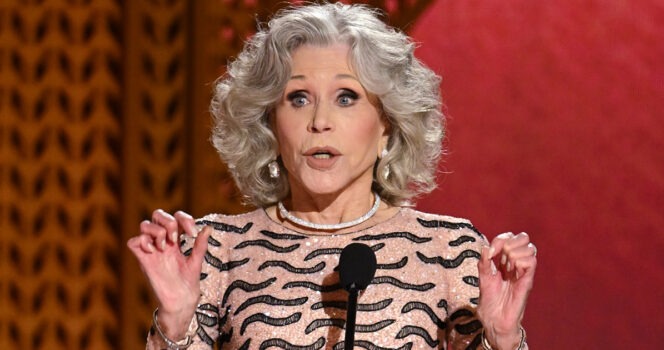

Jane Fonda’s hardly been a stranger to political controversy over the course of her long and storied career. Once dubbed “Hanoi Jane” after being photographed sitting on a North Vietnamese anti-aircraft gun in 1972, it’s fair to say she’s had her fair share of public chastisement.
The actress was also an opinion-splitting figure as far back as the 1960s, when she actively supported the Civil Rights Movement and the Black Panthers to the chagrin of certain sections of society.
This past weekend, Fonda was awarded the Screen Actors’ Guild (SAG) Life Achievement Award, and used part of her speech to throw shade in the direction of President Donald Trump.
With the current political climate in the US testy to say the least, it’s hardly a wonder that many of the country’s biggest celebrities are making their voices heard.
For 87-year-old Fonda, Sunday’s SAG Awards provided the perfect platform to make a statement.
“Thank you SAG AFTRA. Your enthusiasm makes this seem less like a late twilight of my life, and more like a go girl, kick a**. Which is good because I’m not done.” Fonda said.
Though she didn’t directly namedrop President Trump, Fonda referenced Sebastian Stan’s portrayal of him in 2024’s The Apprentice.
Jane Fonda’s speech
“Though you may hate the behavior of your character, you have to understand and empathize with the traumatized person you’re playing,” she said.
The actress proceeded to then defend ‘wokeness’, stating: “Empathy is not weak or ‘woke.’ And, by the way, ‘woke’ just means you give a damn about other people.
“A whole lot of people are going to be hurt by what’s happening, by what’s coming our way,” she continued.”‘We are going to need a big tent to resist what’s coming at us.”
“Empathy is not weak or woke. By the way, ‘woke’ just means you give a damn about other people”
—Jane Fonda accepting her SAG Lifetime Achievement Award
See the full winners list: https://t.co/1H9Qsgq4hw pic.twitter.com/MzhLgEjdT5
— DiscussingFilm (@DiscussingFilm) February 24, 2025
“And even if they are of a different political persuasion, we need to call upon our empathy and not judge, but listen from our hearts, and welcome them into our tent. Because we are gonna need a big tent to resist successfully what’s coming at us.”
Fonda’s comments come in the wake of some turbulent weeks in US politics. Many had anticipated that Trump’s second term in office would mean chaos, but few could have predicted just how fast the apple cart might be tipped upside down.
Amid a slew of executive orders and typically boisterous claims – many of which have questionable ties to reality – Trump has wasted no time at all in trying to enforce large-scale changes, for better or for worse.
His newly-founded Department of Government Efficiency, headed by Elon Musk, has come in for particular criticism in recent days, while Trump’s apparent siding with despot Vladimir Putin in an attempt to negotiate an end to the war in Ukraine has caused concern on the international stage.
What did you make of Jane Fonda’s statement? Let us know in the comments.
Best Of
A Black baby was born to my wife, and I was by her side forever
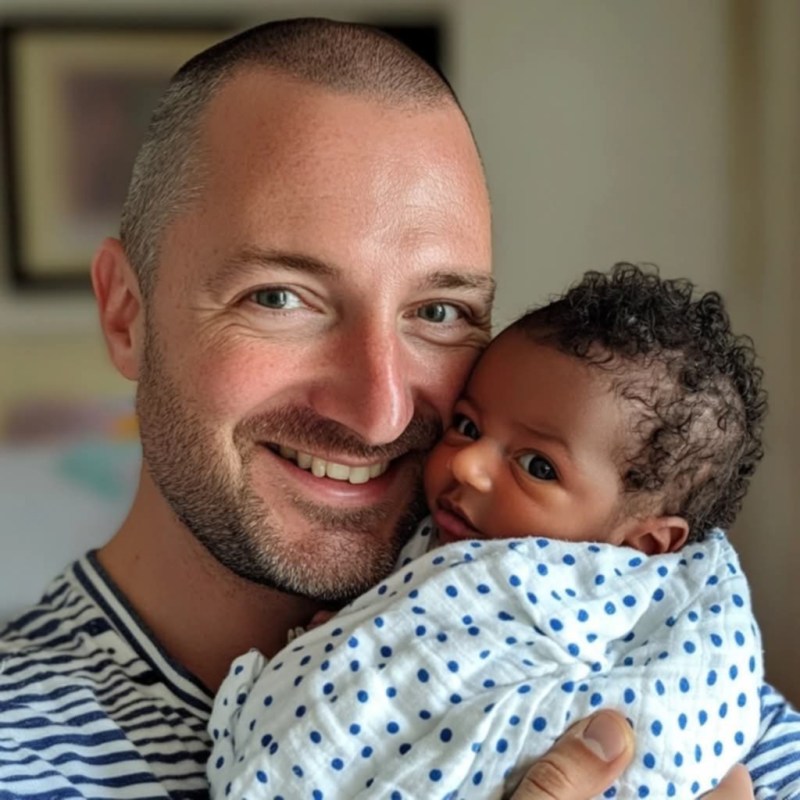
There was an almost electric sense of expectancy in the delivery room. Emma, my wife, was lying on the hospital bed with her fingers clenched around mine and a look of excitement mixed with fatigue. A dreamlike atmosphere was created by the quiet voices of the nurses, the regular beeping of the monitors, and the doctor’s gentle words of encouragement.
It was this. The time we had been anticipating. Choosing baby clothes, experiencing small kicks in the middle of the night, and nine months of delight. We spent nine months wondering if our unborn child would have Emma’s golden hair. My angular cheekbones? The dimples that were inherited? Everything else in the room was broken by a piercing wail. The baby was here.

I looked over and saw the doctor gently lifting our baby, her face wrinkled up as she drew her first breaths, her tiny limbs wriggling. My eyes pricked with tears. She was flawless. But Emma’s terrified scream, which I had not anticipated, broke the moment.
“This isn’t my child!” The room became quiet. The nurses froze. The doctor paused in mid-step. I thought my wife would be overwhelmed, perhaps simply in shock from giving birth. However, the expression in her eyes was one of utter incredulity rather than simply fatigue.
In an attempt to maintain composure, one of the nurses gave a soft grin. She remarked, “She’s still attached to you,” as though to reassure my wife that nothing was wrong. Emma, however, gasped for air and shook her head angrily. “It’s not feasible! Never in my life have I dated a Black man!
The words were piercing and weighty as they hung in the air. Everyone was uncertain of how to respond, and the room remained strangely still. As I turned to face our daughter, a gorgeous newborn girl with skin that was substantially darker than either of ours, my heartbeat hammered in my ears. However, her features were definitely ours.
Emma was shaking next to me, and it felt like the whole world was tilting beneath her. I grounded her by squeezing her hand and making her look at me. I stated unequivocally, “She’s our baby,” in a firm voice. “That’s the only thing that counts.”
Emma’s gaze shifted from our daughter to me and back again. As a nurse gently placed the infant in her arms, she gasped. At first, she seemed hesitant to touch her, as though she was scared of something she didn’t comprehend. However, something changed the instant our daughter’s little fingers encircled her pinky.
She loosened her shoulders. Something softer replaced the stiffness in her face. She felt a mixture of relief, tiredness, and love as tears filled her eyes. She let out a trembling breath. She muttered, “She’s gorgeous.” The room seems to breathe once more. The nurses looked at each other but continued working. With a nod, the doctor and I exchanged a quiet agreement.
The days that followed were a haze. I found myself watching our kid nonstop while Emma recovered, trying to figure out what was going on. She had my chin, my nose, and even the same tiny frown I had as a newborn, so I knew without a doubt that she was my. However, Emma’s tirade persisted.
She had been so convinced, not because I had any suspicions or doubts about her. Emma was the first to propose the DNA test. “I just need to know,” she said one evening in a little, nearly embarrassed voice. “I do love her.” But I must comprehend.
So we did it. We waited after sending off the samples. Two weeks later, the results were received. Emma opened the email with shaking hands. My heart was racing as I stood behind her. As she read, she covered her mouth with one hand and gasped.
The screen showed her ancestry record, which in bold letters verified what we had never known: Emma had generations of African ancestry. She turned to face me, tears streaming down her cheeks. “I didn’t know,” she muttered. “All this time, I was unaware.”
I kissed the top of her head as I drew her into my arms. I muttered, “It doesn’t change anything.” “We own her. She was always. Emma laughed softly and drippingly. “I suppose my panic was in vain.” I grinned. “Well, people experience that during childbirth.” She pushed me and rolled her eyes, then turned to face our daughter, who was now soundly asleep in her cradle. There were no more questions after that. Just love. The world had its questions, of course.
Members of the family arched their brows. In supermarket stores, strangers made remarks on the discrepancies. “Is she adopted?” some even questioned. Emma would initially become uneasy when asked those questions because she wasn’t sure how to react. Then, however, she would smile and declare, “No,” with utter assurance.
We own her. We vowed to nurture our kid with pride in all facets of her background as the years went by. We studied the customs, background, and cultures associated with Emma’s DNA as we dug deeper into her newfound ancestry. We made sure our kid never doubted her place in the world by surrounding her with love.
She played with her fingers while sitting on Emma’s lap one evening when she was around five years old. She said, “Mommy?” “What causes my skin to differ from yours?” Emma brushed a curl from her forehead and grinned. “Because you are unique, my dear. You had a lovely past that we both shared. “Like a mix?” she tilted her head in question. “Exactly,” I remarked as I sat next to them. “Like the most exquisite painting, with both Mommy’s and Daddy’s colours.” Satisfied with the response, she smiled and resumed playing.
“Thank you for reminding me that day in the hospital,” Emma muttered as she sought for my hand as we watched her sleep that night. “For what purpose?” “That she belongs to us,” she declared. “That was all that was ever important.” And I knew without a doubt that I would always be there for them as I gazed at my daughter, who was so lovely and full of love. through each query. through each obstacle. through everything. Because appearances weren’t important in family. It wasn’t.
Trending
-
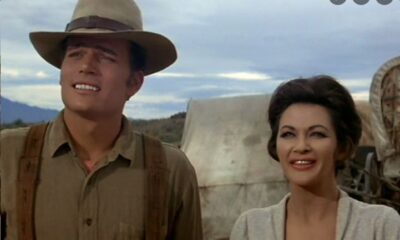
 Entertainment1 year ago
Entertainment1 year agoJohn Wayne’s son speaks on military service, Hollywood life and his dad, ‘The Duke’ – My Blog
-
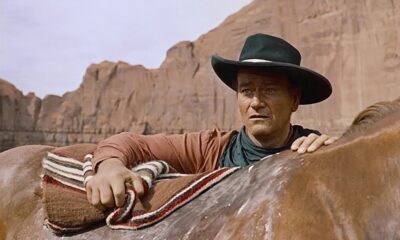
 Entertainment1 year ago
Entertainment1 year ago40 Legendary John Wayne Quotes – My Blog
-
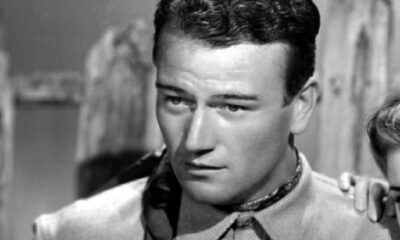
 Entertainment1 year ago
Entertainment1 year agoNew biography reveals the real John Wayne – My Blog
-
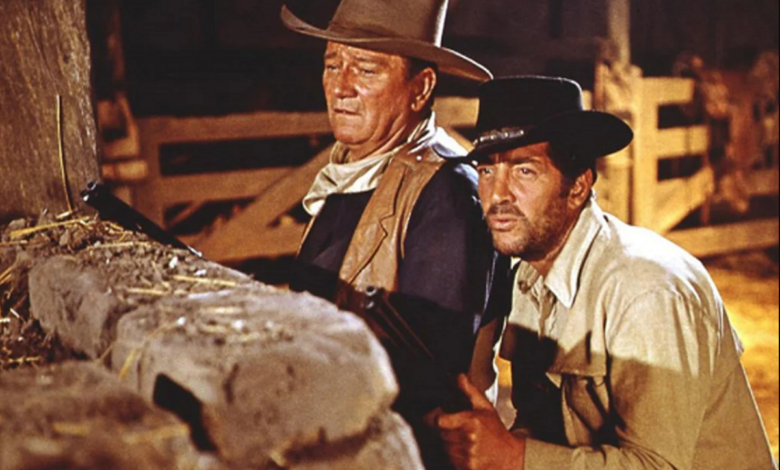
 Entertainment2 years ago
Entertainment2 years agoWhy one POPULAR ACTOR was FIRED from THE SONS OF KATIE ELDER and lost his career as a result! – Old western – My Blog
-
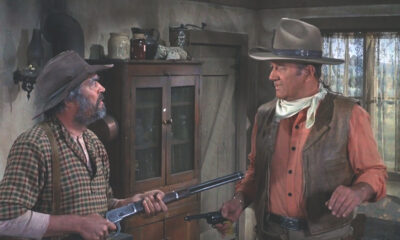
 Entertainment1 year ago
Entertainment1 year agoRio Lobo (1970) marked the last collaboration between John Wayne and Howard Hawks. – My Blog
-
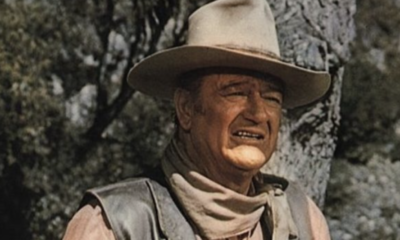
 Entertainment1 year ago
Entertainment1 year agoJohn Wayne and the ‘Bonanza’ Cast Appeared in This Epic Coors Light Commercial – My Blog
-
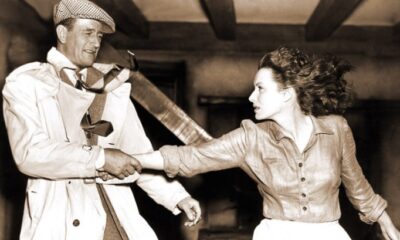
 Entertainment1 year ago
Entertainment1 year agoHow Maureen O’Hara Broke Her Hand During Iconic Scene With John Wayne – My Blog
-
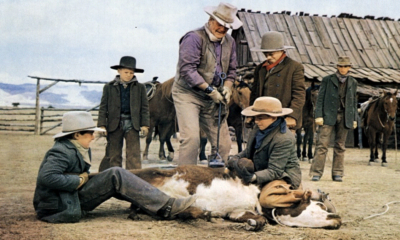
 Entertainment1 year ago
Entertainment1 year agoDid John Wayne really have a good time filming 1972’s The Cowboys? – My Blog



